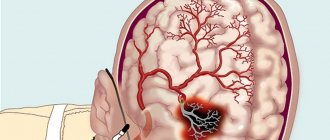Prevention of diabetes mellitus - risk factors
In adults, prevention of pancreatic disease should begin immediately if 3-4 points out of 10 main risk factors match:
- Inactive lifestyle, static posture when working, lack of physical activity.
- High blood pressure.
- Predisposition due to unfavorable heredity.
- Diagnosed glucose intolerance or predisposition to it.
- If you are obese or have a body weight that exceeds standard values.
- If vascular diseases are diagnosed.
- At pre-retirement age over 45 years.
- When diagnosed with diabetes mellitus in pregnancy.
- In case of excess (more than 4 kg) or insufficient (less than 2.5 kg) birth weight for the child and his mother.
- Elevated blood lipid levels.
The health of the pancreas is posed by:
- infections and viruses (from common ARVI to rubella and hepatitis);
- smoking;
- excessive craving for alcohol;
- use of synthetic and herbal drugs.
Body water balance
Prevention of diabetes includes constant monitoring of the amount of fluid entering the body. In order for the acid neutralization reaction to occur in the human body, in addition to the pancreatic hormone, a sufficient level of bicarbonates is required (they come with aqueous solutions).
Against the background of dehydration, bicarbonate continues to be produced as a compensatory mechanism, and insulin levels at this moment decrease. The result is high blood glucose levels and low levels of hormonally active substances.
Important! In addition, water is involved in almost all vital reactions, and if it is deficient, other metabolic processes in the body will be disrupted.
Preference is given to clean drinking water without gas. In order to avoid diabetes, especially if one of your relatives suffers from this pathology, you need to reduce the intake of coffee, strong tea, and carbonated drinks in your diet. Allowed alcohol limits are as follows:
- for men – no more than 100 g of strong drinks (high-quality!), no more than one glass of dry red wine;
- for women - no more than 50 g of strong drinks, no more than 150 g of dry red wine.
Avoid beer altogether from your diet, as it provokes sharp surges in blood sugar even in a healthy person, not to mention those who are predisposed to hyperglycemia.
Beer is a drink that causes delayed hypoglycemia, which is as dangerous for humans as a sharp rise in blood sugar
Diabetes mellitus - prevention and treatment
Diabetes is a pathology that is outwardly invisible, but has already affected more than 350 million people in the world. This disease is diagnosed in 2 people in the world every 10 seconds and is the third cause of death.
Treatment of diabetes involves the intravenous administration of insulin, which, due to dysfunction, the pancreas cannot produce on its own. Therapy depends on the severity of the disease:
- Mild form – correction of nutrition up to complete abstinence from glucose-containing products.
- Moderate severity - systematic use of hypoglycemic drugs and insulin therapy (from 0.2 to 0.5 units per day).
- Severe condition - daily subcutaneous injections of insulin, surgery (gastric bypass, removal of part of the stomach).
Prevention covers:
- Nutrition: reduce the amount of carbohydrates by giving up starchy foods and vegetables, milk, yogurt, sweets and flour, fruits, smoothies and juices from them.
- Sleep at least 7 hours a day, go to bed no later than 22.00.
- of physical education into your daily routine , take at least 9-10 thousand steps daily.
- Monitoring your well-being . The following symptoms should alert you: a constant feeling of thirst, dry skin, sudden changes in weight, hair loss, prolonged elevated body temperature.
- Regular tests : monitoring blood glucose levels, glycated hemoglobin, sugar load test.
What is prevention and why is it needed?
As many people know, preventing the occurrence of a disease is the best way to treat it. This statement is also true regarding pancreatic pathology. The problem of modern times, and indeed of all humanity, is the wrong approach to one’s health.
Very often, people lead a chaotic and harmful way of daily life, they begin to have serious problems, and after the onset of various diseases, they are obliged to pay a lot of money for treatment, endure health procedures and suffer from the complications that arise.
All this can be avoided. To prevent the progression of any disease, there is prevention, which can be divided into:
- Primary;
- Secondary;
- Tertiary.
Primary prevention of diabetes is aimed at preventing the occurrence of the disease itself. The second fights the emergence of complications and tries to maintain normal blood glucose levels.
The last option for preventive influence is not relevant for patients with diabetes, since this pathology currently remains incurable. This approach can be applied, for example, to patients with rheumatic fever, when after the end of the illness a course of penicillin injections is necessary to reduce the risk of reinfection.
Prevention of type 1 diabetes
Type 1 diabetes is diagnosed when the cells in the endocrine pancreas (beta cells) do not produce insulin. Without this protein hormone, glucose is not broken down in the body, which leads to serious metabolic dysfunction.
The reasons for this pathology are:
- Congenital (mutations due to genetic predisposition).
- Acquired (infection, mechanical trauma, which led to inflammatory processes and death of gland tissue).
Preventive actions against type 1 diabetes include:
- natural feeding of newborns. Together with mother's milk, the baby receives protective cells to form its own immunity. Cow's milk contained in dry formulas can provoke pancreatic pathologies.
- strengthening the immune system and counteracting infections (hardening, taking multivitamins, immunomodulators).
Will direct
Antidiabetic vitamins include:
- bean powder;
- dried dandelion rhizome, burdock;
- zinc;
- B vitamins;
- ascorbic and nicotinic acids;
- retinol;
- chromium.
There are no contraindications to use other than individual intolerance. For prevention, take 1 tablet per day for adolescents over 14 years of age and adults with water during or immediately after meals. The duration of the course is 1 month. The cost of 1 package in Russian pharmacies is 194 rubles.
Complivit Diabetes
A complex of nutrients specially designed to prevent endocrine disorders, contains:
- calcium pantothenate;
- folic, ascorbic and lipoic acids;
- routine;
- chromium;
- zinc;
- selenium;
- biotin;
- nutrients A, group B.
Reception is prohibited for:
- children under 14 years of age;
- women during pregnancy;
- patients with pathologies of the stomach, heart function and impaired blood supply to the brain.
Preventive use includes 1 dose per day during meals with 120 ml of water. The course duration is no more than 30 days, then a break for the same period. The price of a package of 30 tablets in Russia is 290 rubles.
Doppelhertz Active
1 tablet of preventive vitamins contains:
- 200 mg each of magnesium and ascorbic acid;
- 42 mg tocopherol;
- 18 mg nicotinamide;
- 6 mg calcium pantothenate;
- 5 mg zinc gluconate;
- 5 mg of nutrients B1 and B6;
- biotin;
- folic acid;
- magnesium;
- selenium;
- chromium;
- nutrient B12.
Dosage of the drug for a course of 1 month - 1 tablet per day with food, washed down with warm liquid, for children over 14 years of age and adults.
It is not recommended to use vitamins in case of intolerance to the components and acute pathologies of the liver, heart, kidneys, or circulatory system.
Price in Russia – 250 rubles for 30 pcs.
Prevention of type 2 diabetes mellitus
Type 2 pathology is detected in 85-90% of diabetic patients and is associated with insufficient production of insulin by the body. Differs from type 1 diabetes in that:
- develops slowly over several years;
- symptoms are difficult to diagnose;
- insulin is produced, but little or the body cannot use it;
- diagnosed after 40 years of age.
The disease mainly affects:
- old people;
- women;
- obese patients;
- people with weakened immune systems;
- women during pregnancy and after childbirth.
To avoid the appearance of type 2 disease, doctors recommend:
- Eat within the daily caloric intake limits, without “harmful” foods: up to 2200 calories for women and older people, up to 2500 calories for men.
- Maintain a balance of sleep and wakefulness - 8 and 16 hours, respectively.
- Introduce sports activities (walking, running, active dancing, games) as a habit.
- Avoid mental and nervous exhaustion at work and at home (take magnesium preparations: Magnelis B6, Panangin, Magne B6, Asparkam, drink tincture of valerian, motherwort before going to bed).
- Minimize the use of substances that negatively affect health.
Physical activity
Adequate physical activity is important not only as a measure to prevent the development of diabetes in women and men, but is also used to achieve compensation in the event of the disease. At the onset of pathology, it is enough to correct the individual menu and perform a set of special exercises several times a week to keep glycemic levels within acceptable limits.
Sport increases the sensitivity of cells and tissues of the human body to insulin, prevents the development of pathologies of the heart and blood vessels, promotes weight loss, removes “excess” cholesterol, and has an anti-stress effect.
In order to avoid getting sick even in the initial stage of the pathology (if the disease has already occurred), preference is given to:
- fitness;
- yoga;
- walking;
- swimming;
- cycling;
- volleyball
Fitness is one of the methods to control glycemia
Prevention of complications of diabetes mellitus
If there is a failure in the stable endocrine functioning of the pancreas, complications arise:
- retinopathy (damage to the retina leading to blindness);
- periodontitis (inflammation of the gums and tissues surrounding the teeth);
- stroke;
- heart attack;
- accumulation of fluid in tissues near the heart;
- squeezing pain in the sternum;
- nephropathy (due to damage to venous and capillary vessels);
- neuropathy (loss of sensation in the limbs).
Medical prevention of complications consists of annual monitoring of the following indicators:
- glucose in urine and blood cells (normally up to 5.5 mmol/l for men and women);
- protein in the urine (up to 0.03 g/l in both sexes in adulthood);
- condition of the feet and eyeballs;
- body volume and weight (body mass index from 18 to 25);
- cholesterol (up to 5 mmol/l in adults, regardless of gender);
- hemoglobin (up to 140 mg/l in women, up to 160 mg/l in men);
- blood pressure (in adults the norm is up to 139 per 94 mm).
Exceeding normal values may not be associated with diabetes, but requires contacting a physician and prescribing in-depth studies (the amount of glucose in venous blood plasma, glucose tolerance, test for glycated hemoglobin).
Additional methods against complications of the disease:
- modification of diet (refusal of alcohol, last meal 1.5 hours before bedtime, amount of fat - 30% of the daily diet, consumption of no more than 5 g of salt per day);
- self-examination (monitor the appearance of the feet, visual acuity, painful sensations in the body);
- daily exercise (running, exercise, yoga, Pilates, swimming).
Preventive traditional medicine
As an additional measure to prevent diabetes, you can use traditional recipes. There are several foods that gently lower blood sugar levels. However, they do not harm the body, unlike synthetic products.
Spices
A combination of cinnamon and turmeric helps to effectively reduce blood glucose levels. The latter has a positive effect on bone marrow hematopoiesis and stabilizes insulin production. Cinnamon increases the absorption of carbohydrates and increases the sensitivity of tissues to sugar, so glucose is quickly absorbed by soft tissues.
Spices can be added to dishes or taken as a regular treatment. To prepare a spice drink, dissolve 0.5 tsp in 250 ml of boiled water. each spice. It is necessary to take the medicine 4 times a day 30 minutes before meals.
Jerusalem artichoke
Jerusalem artichoke normalizes the functioning of the pancreas and increases intracellular metabolism, therefore, to prevent diabetes, it is recommended to eat it every day. To prepare the dish in the morning, you need to grate 1 earthen pear, add a little olive oil and lemon juice.
Beans
A representative of legumes has a high content of lectins. Chemical compounds allow you to normalize protein-lipid metabolism and reduce serum glucose levels in the blood. Beans can be taken in any prepared form on an empty stomach and a herbal infusion can be prepared. To make the latter, you need to pour 2 white grains in a glass of water and leave overnight.
Flax-seed
Flaxseeds can be used as a preventive measure or a method to combat diabetes. To do this, you will need to grind 2 tbsp using a blender. grains and steam the powder mixture with 500 ml of hot water. After completing the manipulation, you need to cover the ingredients with crumbs and boil for 5 minutes. After time, filter the broth and take daily 30 minutes before breakfast.
Primary prevention of diabetes mellitus
Prevention of diabetes mellitus, depending on the goal, is:
- Primary (a person is healthy, but wants to minimize the risk of pathology).
- Secondary (a person is sick, but wants to reduce the likelihood and severity of diabetes-related complications).
Primary prevention comes down to normalizing lifestyle, taking into account adjustments:
- habits (sleep 8 hours, exercise daily and walk for 40 minutes);
- nutrition (counting the number of bread units - up to 24 per day (1 bread unit - 12 g of carbohydrates);
- lifestyle (abstinence from alcohol, nicotine and substances that affect consciousness, minimizing caffeine);
- psycho-emotional state (visiting a psychologist for depression, aromatherapy, yoga, meditative practices, social activity);
- monitoring your well-being (daily examination of the skin, monthly eye examination, blood and urine tests).
It is impossible to influence the following factors:
- heredity;
- age;
- damage and injury during childbirth;
- accidental infection.
Is it possible?
To understand whether preventing the development of diabetes mellitus is effective, let’s take a closer look at the classification of the disease. In medicine, there are two types of it – the first and the second.
First type
DM-1 (insulin-dependent, juvenile) is characterized by irreversible destruction of pancreatic cells and the development of absolute deficiency of the hormone insulin. May be autoimmune or idiopathic. As a rule, it is associated with genetic (sometimes hereditarily determined) anomalies and develops regardless of the action of environmental factors.
Pathogenesis of the disease
This form of the disease is characterized by a sudden onset, severe course and progressive development of complications. Glycemia in patients is controlled by regular insulin injections.
Note! T1DM is most often diagnosed in children and young adults, but can occur at any age.
Second type
T2DM (non-insulin-dependent) diabetes can develop against the background of a slight decrease in insulin secretion. The main thing in the pathogenesis of the disease is the formation of resistance (insensitivity) of peripheral cell receptors to the hormone.
The mechanism of development of CD-2 is different
In addition to hereditary predisposition, the influence of which is less pronounced than with type 1 diabetes, the following risk factors for the disease are identified:
- obesity (especially of the abdominal type);
- chronic pancreatitis, cysts, cancer and other lesions of the pancreas;
- frequent viral infections;
- stress;
- elderly age.
Prevention will help prevent serious hormonal disorders: type 2 diabetes responds well to it.
Secondary prevention of diabetes mellitus
Secondary preventive measures do not differ in type 1 and type 2 diabetes and are aimed at:
- maintaining acceptable levels of glucose in the blood (up to 5.5 mmol/l);
- avoidance of hypertension, including crisis (take medications that lower blood pressure as prescribed by a physician);
- lowering sugar levels with the help of medications (Fobrinol, Glucobay, Maninil, Glucophage - only the doctor sets the dose);
- controlled use of insulin drugs (injections through syringes, syringe pens, pumps);
- treatment of diseases of internal organs;
- increased mobility and active pastime (up to 40 minutes a day, but regularly, without skipping);
- normalization of body weight in accordance with indicators of height and age.
The normal weight-to-height ratio (mass index) is calculated using the formula: weight in kilograms divided by the square of height in meters. For women and men, this figure averages from 18 to 25; an excess indicates a risk of prediabetic condition.
Risk factors for developing diabetes
Diabetes mellitus appears in the presence of a family history; this is typical for both the first and second forms of the disease. But even if there is a genetic predisposition, the development of an overt disease requires the presence of provoking factors. Their significance differs for types 1 and 2.
First type
Children and young people get sick more often. Often the first manifestations occur after an infection: mumps, influenza, hepatitis, rubella. Poisoning with medications, toxins, or pesticides can be a trigger for development.
Any of these factors triggers an autoimmune process, as a result of which antibodies are formed in the body against the cells of its own pancreas. This leads to their destruction and an absolute lack of insulin. Manifestations of the disease occur with the almost complete destruction of functioning islet tissue.
We recommend reading the article about the types of diabetes. From it you will learn about the types of diabetes mellitus, laboratory diagnostics, as well as which type of diabetes mellitus is more dangerous.
Find out more about diabetes in children here.
Second type
It predominates in most patients, accounting for almost 90% of all cases. Among all the reasons for its development, obesity comes first. Disorders of carbohydrate and fat metabolism mutually aggravate each other and lead to the rapid appearance of vascular complications.
The main mechanism for the appearance of metabolic disorders is the acquisition of insulin resistance. That is, a sufficient amount of insulin is produced, but the tissues lose sensitivity to it. Predisposition to loss of ability to respond to hormone release is:
- atherosclerosis;
- hypertension and symptomatic arterial hypertension;
- frequently recurring stressful situations;
- lack of fiber in the diet, predominance of carbohydrate foods - flour products and sweets;
- long-term use of drugs that disrupt metabolic processes - prednisolone and analogues, diuretics, some blood pressure medications, levothyroxine, antitumor drugs;
- inflammation of the pancreas;
- polycystic ovary syndrome;
- age-related changes in the body after 50 years.
Prevention of diabetes mellitus in women
Medical prevention of diabetes is indicated for women at risk - those who:
- during pregnancy gained 15 kg or more;
- gave birth to a child weighing more than 4000 g.
Prevention for pregnant women consists of:
- diet - avoidance of glucose-containing and starchy foods, maintaining the level of energy value of daily nutrition - 2200 kcal;
- physical activity - walking, swimming, yoga on the recommendation of a gynecologist;
- reducing stress levels - spending more time in nature, avoiding conflicts, communicating with like-minded people and friends.
If a woman is diagnosed with diabetes during pregnancy, this can lead to the birth of a child:
- with excess body weight;
- with abnormal developmental defects;
- with low glucose levels and, as a result, a predisposition to diabetes.
Prevention of diabetes mellitus in women after 30
Signs of malfunctions in the endocrine system for the production of hormones in women over 30 years of age:
- decreased libido;
- violation of the frequency and duration of the menstrual cycle;
- feeling of dryness, loss of natural lubrication of the vaginal mucosa;
- hair loss and deterioration of nail quality;
- imbalance of hormones;
- dryness of the epidermis.
Prevention of diabetes mellitus in 30-year-old women consists of the following recommendations from doctors:
- eat a varied and rational diet (proteins - 40% of the diet, fats and carbohydrates - 30% each, avoiding sweets, flour, fatty foods);
- get enough sleep (go to bed before 22.00, get up at 06.00);
- increase the share of physical activity (not necessarily the gym, 40 minutes of running, walking, cycling, swimming per day is enough);
- forget about “bad” habits;
- regularly visit a doctor and conduct self-examination;
- drink clean water at least 1 glass every 3 hours;
- stay calm in stressful situations.
Prevention of diabetes mellitus in women after 50
Women over 50 years of age can develop diabetes due to obesity, menopausal changes and a decrease in the ability of tissues to absorb insulin. Measures to prevent pathology in women of pre-retirement age (at special risk) include:
- taking multivitamin complexes marked “For diabetics”, “Against diabetes”;
- limiting the daily diet to 1800 kcal;
- including 30-40 minutes of walking or playing sports in your daily routine;
- normalization of the balance of fluid entering the body (1.5 liters per day);
- minimizing stress and depressive symptoms;
- regularly visiting your doctor and getting tested;
- control over the glycemic index of foods.
| Low and medium glycemic index (up to 69 g of carbohydrates per 100 g of product) | High glycemic index (over 70 g of carbohydrates per 100 g of product) |
| Bran, rye, whole grain bread | Bread made from wheat flour, with yeast |
| Bulgur, buckwheat, couscous | White rice, potatoes |
| Apple, strawberry | Dates, bananas, watermelon |
| Corn, tomato | Pumpkin, parsnip |
| Lentils | Beans |
Preventing diabetes
According to modern statistics, about 6% of the world's population suffers from diabetes. These are disappointing figures, since the disease belongs to the category of incurable pathologies. In addition, experts predict an increase in the number of sick people over the next decade by 1.5 times.
Diabetes mellitus occupies the bronze level among the pathological conditions that most often lead to death. The disease is second only to tumor processes and atherosclerotic vascular lesions.
Experts urge all people to be attentive to their health status in order to protect themselves and protect their loved ones from developing a terrible disease. What is the prevention of diabetes mellitus and what to do if the disease has already occurred is discussed in the article.
The disease and its risk factors
Diabetes mellitus is called not one, but several endocrinopathies, which are combined due to the main symptom, common to all pathologies - high glucose levels in the bloodstream. The disease occurs due to a lack of insulin production by the pancreas or against the background of a violation of its action.
Pathology has several forms. The most common mechanisms of their development and the main causes of their occurrence are discussed below.
Type 1 diabetes (insulin dependent)
It is characterized by the fact that the pancreatic hormone is produced in small quantities or not synthesized at all.
Because of this, insulin is unable to transport sugar into the body’s cells, which, in turn, experience energy “hunger.”
The body tries to replenish the energy balance using the fat reserve, but as a result of such metabolic processes, toxic substances (ketones) are released into the blood, which can provoke the development of a coma.
Important! A prolonged absence of insulin or its deficiency leads to exhaustion, and the patient loses weight sharply. If the hormone is not administered in the form of medications, the person may die.
Causes causing the development of type 1 disease:
- heredity;
- infectious pathologies;
- influence of viruses;
- unfavorable external factors;
- power supply errors.
The principle of development of the insulin-dependent form of the “sweet disease”
Type 2 diabetes (non-insulin dependent)
Develops in 80% of all patients suffering from the “sweet disease”. If type 1 of pathology is typical for children and adults, then this form affects people over 45-50 years of age. The main factors that provoke non-insulin-dependent diabetes are overeating, abnormal body weight, stress, and a sedentary lifestyle.
What to do if your blood sugar is high
Glucose does not enter the body's cells not because of insulin deficiency, but because they lose their sensitivity to it. This condition is called “insulin resistance”.
According to scientists, obesity is the main factor in the development of pathology, since clinical studies have confirmed that losing weight by even 6-7 kg can improve the prognosis of the outcome of the disease.
Principles of prevention
After clarifying the reasons for the development of pathology, we can move on to the question of how to prevent diabetes mellitus by influencing its etiological factors. The entire complex of preventive measures consists of the following points.
Prevention of type 1 diabetes:
- prevention and timely treatment of viral diseases;
- normalization of lifestyle;
- refusal to drink alcohol and smoke;
- nutrition correction;
- regular monitoring of blood sugar levels during medical examination.
Explaining the principles of how primary prevention of diabetes is carried out is the prerogative of a family doctor, therapist or endocrinologist
Prevention of type 2 diabetes:
- reducing the amount of carbohydrate foods in the diet;
- adequate level of physical activity;
- body weight control;
- regular diagnosis of glycemic levels during clinical examination.
Prevention of diabetes includes constant monitoring of the amount of fluid entering the body. In order for the acid neutralization reaction to occur in the human body, in addition to the pancreatic hormone, a sufficient level of bicarbonates is required (they come with aqueous solutions).
Against the background of dehydration, bicarbonate continues to be produced as a compensatory mechanism, and insulin levels at this moment decrease. The result is high blood glucose levels and low levels of hormonally active substances.
Important! In addition, water is involved in almost all vital reactions, and if it is deficient, other metabolic processes in the body will be disrupted.
Preference is given to clean drinking water without gas. In order to avoid diabetes, especially if one of your relatives suffers from this pathology, you need to reduce the intake of coffee, strong tea, and carbonated drinks in your diet. Allowed alcohol limits are as follows:
- for men – no more than 100 g of strong drinks (high-quality!), no more than one glass of dry red wine;
- for women - no more than 50 g of strong drinks, no more than 150 g of dry red wine.
Avoid beer altogether from your diet, as it provokes sharp surges in blood sugar even in a healthy person, not to mention those who are predisposed to hyperglycemia.
Beer is a drink that causes delayed hypoglycemia, which is as dangerous for humans as a sharp rise in blood sugar
Nutrition
Prevention of diabetes mellitus in men, women and children includes the stage of individual menu correction. A few basic rules will help protect yourself and your loved ones from diabetes.
Prefer whole grains
Clinical studies have proven that whole grain-based products reduce the risk of developing pathology, while carbohydrate products, on the contrary, increase it several times. Whole grains contain coarse dietary fiber - the same carbohydrates, but classified as “complex”.
Complex saccharides are digested in the intestinal tract for a long time and slowly increase blood sugar levels after eating. Also, these products have low glycemic index numbers, which is important to consider when creating a menu.
Whole grains contain a huge amount of vitamins, microelements, and phytochemicals, which are important if secondary prevention of diabetes is carried out. We are talking about people who already have the disease, but are trying to prevent its progression and the development of complications.
Important! Avoid using products based on premium and first grade wheat flour, and white rice flour.
Whole grain flour and products based on it are useful not only for sick people, but also for healthy people
Avoiding sugary drinks
Avoiding sugary drinks can help prevent diabetes. They have high glycemic index values. In addition, clinical studies have proven that the negative effects of such drinks are as follows:
- body weight increases;
- chronic pathologies worsen;
- the level of triglycerides and “bad” cholesterol increases;
- The sensitivity of cells and tissues to the action of insulin decreases.
Including “good” fats in your diet
When we talk about “good” fats, we mean the polyunsaturated group. These substances reduce cholesterol levels in the blood and help prevent the development of diseases of the cardiovascular system. “Good” fats are found in:
- fish;
- nuts;
- legumes;
- oat and wheat germs;
- vegetable oils.
loading…
In order not to get diabetes, in the kitchen of people with a predisposition to the pathological condition there should be a reminder with a list of allowed foods and those that should be limited. The basis of nutrition is:
- vegetable soups;
- lean meats and fish;
- eggs;
- dairy products;
- porridge;
- vegetables and fruits.
Vegetables and fruits are the preferred foods on a menu that helps prevent diabetes
Avoiding diabetes will help avoid or limit consumption:
- fatty meat and fish;
- canned food;
- smoked and pickled products;
- sausages;
- sweets;
- muffins.
Physical activity
Adequate physical activity is important not only as a measure to prevent the development of diabetes in women and men, but is also used to achieve compensation in the event of the disease. At the onset of pathology, it is enough to correct the individual menu and perform a set of special exercises several times a week to keep glycemic levels within acceptable limits.
Sport increases the sensitivity of cells and tissues of the human body to insulin, prevents the development of pathologies of the heart and blood vessels, promotes weight loss, removes “excess” cholesterol, and has an anti-stress effect.
In order to avoid getting sick even in the initial stage of the pathology (if the disease has already occurred), preference is given to:
- fitness;
- yoga;
- walking;
- swimming;
- cycling;
- volleyball
Fitness is one of the methods to control glycemia
Preventing Gestational Diabetes
Pregnant women also get diabetes. We are talking about a separate form - gestational. This type of disease has a development mechanism similar to type 2 pathology. While pregnant, a woman's cells lose sensitivity to the action of the pancreatic hormone.
Important! After the baby is born, the disease goes away on its own, but the woman is on insulin therapy throughout the entire pregnancy to avoid the development of complications.
There is a set of measures to prevent the occurrence of gestational diabetes. It includes:
- nutrition correction (the principles are similar to those described above);
- minor physical activity (after consultation with the treating gynecologist);
- regular monitoring of glycemic indicators - at home you can use a glucometer; at an outpatient clinic, a woman takes a general analysis, a sugar test, biochemistry and a glucose tolerance test;
- monthly, and in the third trimester weekly control of weight gain;
- avoiding taking medications that increase insulin resistance (adrenal hormones, nicotinic acid).
There is an opinion that the development of the disease can be prevented using folk remedies. We are talking about including herbal teas, infusions and decoctions based on plants in the diet that keep glucose levels normal. The opinion is twofold, since such events do not help everyone.
Source: https://diabetiko.ru/raznoe/profilaktika-diabeta
Prevention of diabetes mellitus in men
Signs of diabetes that are specific only to men:
- hair loss according to the principle of partial alopecia;
- erectile dysfunction;
- frequent urge to urinate;
- decreased energy and vitality levels;
- deterioration of blood supply to the pelvic organs.
In men, type 2 endocrine lesions are less common, but actions to prevent the disease are still necessary. These include:
- control over body weight (body mass index no higher than 25, waist circumference no higher than 90 cm), arterial blood pressure level (no higher than 139 to 94);
- transition to natural food products, balanced in content, proteins (30% of the diet), carbohydrates (40%) and fats (30%):
- timely diagnosis with regular visits to the doctor (up to 40 years old, once a year - a general blood and urine test, consultation with a therapist, urologist, cardiologist after 40 years - every six months);
- refusal to take uncontrolled medications;
- reducing salt consumption to 5 g per day, increasing the proportion of fiber from oat bran, flax seeds, and legumes in the diet (38 g per day up to 50 years of age and 30 g for people over 50 years of age);
- taking insulin in the dosage prescribed by your doctor;
- timely treatment and prevention of viral infections.
How to avoid getting type 2 diabetes
The risk group for type 2 diabetes includes people over the age of 45 , as well as those who have relatives with diabetes. In these cases, it is necessary to be examined to determine blood sugar levels at least once every 1-2 years. Timely checking of glucose levels will allow you to identify the disease in the early stages and begin treatment on time. The consequences of diabetes mellitus can manifest themselves in the following complications:
- loss of vision,
- damage to the cardiovascular system,
- deterioration of kidney function.
Since the main cause of diabetes mellitus, after heredity, is obesity, the prevention of type 2 diabetes should begin with dietary adjustments. A well-known way to measure excess weight is to calculate BMI (body mass index). If this indicator exceeds the permissible norms, then the following recommendations for weight loss must be followed:
- fasting and strict diets are unacceptable,
- It’s better to eat several times a day, but in small portions and at certain times,
- don't eat if you don't want to,
- diversify the menu, include fresh vegetables and fruits in the diet, exclude fatty and canned foods.
Playing sports and daily moderate physical activity are also preventive measures in the fight against diabetes. When playing sports, metabolism is activated, blood cells are renewed, and their composition improves. However, remember that the type of sport and level of load must be selected based on your general physical condition; it is better to consult a doctor.
Prevention of diabetes mellitus in children
Prevention of the disease is indicated, first of all, for children born with excess body weight - over 4 kg. Such newborns are fed either breast milk (its composition is ideal for developing infant immunity) or dry formula without milk sugar.
From the moment of birth, care is taken to protect the child from infections, viruses, and diseases. Regular (twice a year) preventive examination of children by an endocrinologist is indicated.
In adolescents, disease prevention comes down to:
- nutrition control (refusal of fast food, mandatory breakfast, maintaining water balance up to 2 liters of fluid per day);
- visiting sports sections;
- limiting the use of gadgets at night instead of sleep;
- hardening (pouring with cold water, swimming)
- taking vitamins (Complivit Kids, Alphabet, Pikovit, Multi-Tabs - dosage according to age);
- minimizing stressful situations, including in the school community;
- ban on smoking and drinking alcoholic beverages;
- annual examinations by an endocrinologist.
Prevention of diabetes mellitus - medications
Preventive agents in the fight against the first signs of diabetes mellitus according to active ingredients:
- Benfotiamine (Benfogamma);
- Benfotiamine + pyridoxine hydrochloride (Milgamma, Milgamma Compositum);
- Thioctic acid (Berlition);
- Vinpocetine (Cavinton);
- Cinnarizine (Stugeron);
- Meldonium (Mildronate).
Milgamma Compositum
Tablets containing equal parts (0.1 g) of benfotiamine and pyridoxine hydrochloride. Additional components of the medicine:
- microcrystalline cellulose (0.2 g);
- povidone K-30 (0.008 g);
- glycerides (0.005 g);
- silicon dioxide (0.007 g);
- talc (0.005 g);
- croscarmellose sodium (0.003 g).
The drug is not suitable for children, pregnant women and patients with:
- intolerance to components;
- allergies to fructose, glucose and their derivatives.
For preventive purposes, take 1 tablet per day, but not longer than 28 days. The medicine should not be chewed, but washed down with 100 ml of water, regardless of food intake. A package of Milgamma Compositum for 30 tablets in Russia is sold for 600 rubles.
Cavinton
A medicine based on vinpocetine, a substance that normalizes blood circulation in the blood vessels of the brain. The product is produced in the form of tablets or a concentrated solution. Each tablet and 1 ml of concentrate contains 0.005 g of active substance.
Auxiliary components in tablets:
- polysorb (1.25 mg);
- additive E572 (2.5 mg);
- talc for moisture removal (5 mg);
- starch (0.096 g);
- natural sugar lactose monohydrate (0.14 g).
Additionally, the injection solution is enriched with:
- vitamin C (0.5 mg) to strengthen the immune system;
- sodium disulfite (1 mg) – retains moisture, prevents dehydration;
- dioxysuccinic acid (10 mg) – antioxidant;
- phenylcarbinol (10 mg) for aromatization;
- glucite (80 mg) – sweetener;
- injection water (1 mg).
The drug is prohibited for use if:
- intolerance to milk sugar and vinpocetine;
- expecting a child or breastfeeding him;
- being a minor;
- cardiac ischemia and arrhythmias in the acute stage;
- cerebral hemorrhage.
Tablets for the prevention of diabetes mellitus are taken after meals, 1 tablet (5 mg) three times a day. The maximum duration of therapy is 3 months. A package of 50 tablets in Russian pharmacies costs 230 rubles.
For intravenous injections, 2 glass ampoules of the concentrate are first mixed with 0.5 liters of physiological or isotonic solution and administered at a rate of 80 drops per 1 minute. It is prohibited to give injections with Cavinton solution intramuscularly or in its pure form.
After a course of injections lasting 14 days, they switch to preventive therapy with tablets - 1 pc. per day with water. The concentrate in the amount of 10 ampoules per package in Russia costs 220 rubles.
Mildronate
Metabolic medicine Mildronate in the form of a solution in 1 ml contains 0.1 g of the active substance - meldonium dihydrate - and injection water as an auxiliary element.
The product should not be used to prevent diabetes in minor children and pregnant, lactating women, as well as patients with:
- intolerance to meldonium;
- intracranial hypertension;
- hepatological and nephrological pathologies.
The drug is administered according to the instructions:
- into a vein;
- into the muscle;
- under the conjunctiva.
For the prevention of endocrine pathology, it is proposed to take a course of 10 days (twice a year) of intramuscular or intravenous injections of 1 ampoule in the morning, then for another 20 days, take 1 capsule of Mildronate with water after meals.
A solution in a package of 10 ampoules in Russian pharmacies costs 320 rubles, and in capsules of 0.5 g - 550 rubles. for 60 pieces.
Metformin - prevention of diabetes mellitus
Tablets for the prevention of type 2 diabetes mellitus contain 0.5 g of biguanide, metmorphine, each. Supplement the composition of the medicine:
- polyvinylpyrrolidone K-90;
- crospovidone CL;
- starch;
- magnesium stearate.
The drug is not recommended for use during pregnancy and lactation, as well as:
- allergies to the active substance;
- pathologies in the functioning of the kidneys or liver;
- oxygen starvation due to a malfunction of the heart or respiratory system;
- dehydration;
- alcohol addiction in the chronic stage;
- increasing the level of acidity in the body;
- heart attack;
- insufficient caloric nutrition;
- under 18 and over 65 years of age.
For preventive purposes, take 1 tablet (0.5 g) orally with food or no later than 10-12 minutes after a meal, with 120-150 ml of clean water. 1.5 weeks after the start of therapy, it is permissible to increase the dose to 3 single doses per day (morning, lunch and evening).
The cost of a package of Metmorphin in a dosage of 0.5 g (60 tablets) is 110 rubles. in the Russian pharmacy chain.
Alfit-10 for the prevention of diabetes mellitus
A natural preparation for the prevention of diabetes from a mixture of dried and crushed medicinal plants.
The composition for use in the morning contains:
- pharmaceutical goat's rue;
- blueberry leaves;
- Rhodiola rosea;
- Inonotus mushroom, beveled;
- stinging nettle;
- licorice.
The evening collection, in addition to the components of the morning herbal mixture, includes a soothing plant - five-lobed motherwort.
Alfit-10 is not recommended for use if you are allergic to any of the components, as well as for pregnant and lactating women.
To prevent diabetes, brew 200 ml of boiling water for 1 herbal briquette (2 g), leaving for 7 minutes. Then the sachet with herbs is taken out, the composition is cooled to an acceptable temperature and drunk in the morning or evening on an empty stomach. The price of a package for 30 briquettes in Russia is 230 rubles.
Glucophage for the prevention of diabetes
The drug in tablets for the prevention of pancreatic disease contains metformin hydrochloride in a dosage of 0.5 g, 0.8 g or 1 g. Additionally, the product is enriched with magnesium stearate and povidone.
Despite its high preventive effectiveness, the medicine has many contraindications:
- intolerance to constituent elements;
- pathologies in kidney function;
- violation of carbohydrate metabolism in the body;
- acute dehydration;
- postoperative period;
- alcoholism or alcohol intoxication;
- lactic acid coma (accumulation of lactic acid);
- insufficient intake of calories from food.
It is also not recommended to take the drug during pregnancy, breastfeeding, over 60 years of age and under 18 years of age.
Take Glucophage tablets orally after meals, 0.5 or 0.8 g twice a day. The dose is adjusted by the attending physician every 14 days, based on glucose levels. Cost of 30 tablets of the drug in Russia in dosage:
- 0.5 g – 105 rub.;
- 0.8 g – 123 rub.;
- 1 g – 185 rub.
Prevention of T2DM
This type accounts for up to 90-95% of all cases of the disease. Among the reasons for the sharp increase in its prevalence are:
- urbanization;
- features of the lifestyle of a city resident;
- poor nutrition;
- rising prevalence of obesity.
"Sofa" lifestyle
A clinical feature of NIDDM familiar to all physicians is its long-lasting and asymptomatic course. Most patients are not even aware of pathological changes in the body and learn about their diagnosis by accident.
Do you know your glycemic level?
This is interesting. According to statistics, for every identified patient with T2DM, there are 2-3 people with hyperglycemia who are unaware of problems with carbohydrate metabolism.
That is why preventive screening examinations are important in diagnostic endocrinology.
Check yourself: risk groups for diabetes
Individuals at risk for NIDDM should be especially attentive to their health.
Factors that allow a patient to be classified in this category include:
- age over 40-45 years;
- high BMI, abdominal obesity;
- family history of diabetes;
- physical inactivity;
- impaired glucose tolerance;
- gestational diabetes or a history of birth of a large fetus (>4.5 kg);
- AH, CVD diseases;
- dyslipidemia;
- PCOS in women.
As with type 1 diabetes, the prevention and treatment of type 2 diabetes in men and women consists of three stages.
Table 2: Levels of preventive measures to prevent T2DM:
LevelStage of pathology developmentPurpose
Primary Presence of predisposing factors Preservation of normoglycemia Secondary Prediabetes Prevention of disease manifestation Tertiary Diagnosed diabetes mellitus 2 Preservation of functional activity of the pancreas, prevention of the development of complications
Primary
Since the etiology of T2DM includes both hereditary predisposition and environmental factors, the disease can be prevented (or delayed for a long time) by adjusting lifestyle.
Prevention tips for people with risk factors include:
- Correction of lifestyle and nutrition
(the patient must follow all doctor’s recommendations for life): - normalization of body weight;
- hypocaloric diet;
- sharp limitation of easily digestible carbohydrates and fats in the diet;
- the presence of fresh vegetables and fruits in the daily menu;
- fractional meals 4-5 r/day;
- chewing food thoroughly;
- maintaining an adequate diet;
- increasing the level of physical activity;
- support from loved ones and medical staff.
- According to the doctor's indications
- drug correction of obesity. The drugs of choice are: - Sibutramine;
- Orlistat;
- Metformin.
- Drug treatment of atherosclerosis and dyslipidemia
. The preferred drugs today are statins (Atorvastatin, Simvastatin). - Antihypertensive therapy
: - Beta blockers;
- Diuretics;
- ACE inhibitors;
- Calcium antagonists.
We take the pills strictly according to the instructions
This is interesting. Alternative medicine has also proven itself well. The drug based on Jerusalem artichoke concentrate Noteo is widely known: prevention of diabetes mellitus is carried out by lowering sugar levels, strengthening the immune system, thinning the blood, normalizing metabolism, and improving intestinal function.
Secondary
Secondary prevention is recommended for all patients with:
- impaired glycemia - with a glucose concentration of 5.6-6.0 mmol/l in capillary (peripheral, finger) blood;
- IGT – when sugar is above 7.8 mmol/l 2 hours after oral administration of glucose solution.
In addition to the general rules for lifestyle correction described in the section above, 4 goals are set for persons with prediabetes:
- weight loss (more than 5% of the original);
- reducing the fat content in food (should be less than 30% of daily calories, for saturated animal fats - less than 10%);
- regular consumption of vegetables and fruits (more than 15 g of fiber/1000 kcal);
- Exercise at least 4 times a week.
Their achievement makes it possible to minimize the risks of pathological hyperglycemia.
Choose the best sport for you
In addition, according to the doctor's indications, the drug Metformin may be prescribed for prophylactic purposes.
Tertiary
Prevention of complications in diabetes mellitus involves drug correction of hyperglycemia, dyslipoproteinemia, hypertension and other risk factors. Target values for key laboratory parameters are presented in the table below.
Table 3: Target test values for type 2 diabetes:
Name Indicator, mmol/l Blood sugar On an empty stomach - 4-7 After 2 hours of food - <10 TC (total cholesterol) <4.5 LDL <2.6 HDL in men - >1 In women - >1.2 TG <1.7 SBP 120-130 mm Hg .DBP70-80 mmHg.
The health bulletin will help you learn more about the features of disease prevention
Thus, measures to prevent the development of diabetes include mandatory screening studies, as well as correction of lifestyle, physical activity and nutrition. The epidemic nature of T2DM indicates the need to introduce early detection and prevention of the disease at the state level.
Diet to prevent diabetes
Prevention of the disease begins with a balanced diet, which must include:
- fresh, boiled vegetables (alternatively, steamed, baked or stewed);
- poultry meat;
- lean fish;
- compotes and herbal decoctions, caffeinated drinks.
- seafood;
- olive oil;
- unsweetened seasonal fruits;
- berries;
- low-fat dairy products;
- mushrooms.
Use is strictly limited:
- sugar and any of its derivatives (fructose, stevia, erythritol are allowed);
- pickles, canned foods;
- dishes prepared by frying;
- products made from wheat flour (bakery and pasta);
- potatoes;
- dried and fresh grapes;
- bananas;
- products fried in vegetable and butter;
- desserts, sweets, confectionery products;
- pork and other types of fatty meat, animal fat, leather.
Sample diet menu to lower blood glucose levels:
- Breakfast: whole grain bread with Greek yogurt, unsweetened coffee.
- Snack: baked green apple, fructose cookies.
- Lunch: vegetable broth soup, boiled buckwheat, grilled chicken fillet, compote.
- Snack: a handful of nuts, baked milk.
- Dinner: low-fat fish baked in the oven with boiled vegetables.
Principles of nutrition
The main method of preventing diabetes is following the principles of proper nutrition. To maintain optimal glucose levels, you should limit your intake of sugar and foods with a high glycemic index.
Patients at risk of developing diabetes need to reduce their consumption of potatoes, flour products, sweets and sweet fruits (grapes, bananas, raisins). Alcohol, fast food, carbonated drinks, processed foods, pickles and marinades are prohibited. This will relieve excess stress on the pancreas, optimize insulin production and allow you to maintain blood glucose levels at an optimal level.
You need to eat often (5-6 times a day) in small portions. It is important to avoid overeating or prolonged fasting.
Stricter dietary guidelines for diabetes must be followed by overweight people, since obesity is a factor that increases the risk of developing the disease. If you are overweight, you should completely abandon high-carbohydrate foods, enriching your diet with protein and plant foods. You need to eat often (5-6 times a day) in small portions. It is important to avoid overeating or prolonged fasting. This will ensure an even supply of calories and nutrients to the body, help control appetite and speed up the weight loss process. In this case, the last meal is allowed at least 4 hours before going to bed.
A diabetic's diet should be balanced, with an optimal content of calories, fats, proteins and carbohydrates. Choose boiling, stewing or baking as a cooking method; avoid frying using animal fats.
To prevent diabetes, be sure to eat greens, tomatoes, bell peppers, cereals, beans, citrus fruits and walnuts. The menu should include low-fat dairy and fermented milk products, lean meats and fish. They help normalize blood glucose levels and stimulate insulin production.
For prevention in women during pregnancy, it is important to monitor the daily caloric intake and the amount of carbohydrates consumed. The menu should be as healthy as possible in order to provide the expectant mother and baby with the necessary nutrients, vitamins and minerals.
Prevention of diabetic foot in diabetes mellitus
Diabetic foot is a syndrome that occurs against the background of a disease of the body's enocrine gland when insulin production is impaired. Pathology manifests itself as:
- dry, cracked skin on the feet;
- rapid formation of corns;
- changes in the anatomical shape of the feet;
- ulcers, wounds, cracks, calluses, abrasions.
Preventive measures include:
- Regular careful self-examination.
- Care aimed at increased hydration and nutrition of the skin of the feet, soles (Dardia Lipo balm with urea (2 times a day on dry epidermis), Lamisil (1 time per day), Radevit (twice a day), Balzamed (once daily for 1 month).
- Treatment of diabetes with medications (Metmorphine, Troglitazone, Glimepiride, Acarbose, Vildaglipti - only with a doctor’s prescription in the dosage indicated by him).
- Prevention of complications through a healthy lifestyle.
- Dietary rational nutrition (include green vegetables, unsweetened fruits, flaxseed oil, fatty fish in the diet, avoid potatoes, sweet and fatty foods).
- Using unloading orthopedic insoles in shoes.
It is important not to:
- mechanical damage to the skin;
- long-term thermal effects on the feet (hypothermia, overheating);
- the use of tannins in creams and care products;
- the use of patches intended against calluses;
- wearing uncomfortable tight shoes;
- use of low quality skincare products.
Diabetes mellitus during pregnancy
Diabetes mellitus is not an obstacle to procreation. But when planning a child, future parents need to remember the risks of diabetes during pregnancy and make efforts to minimize them.
Important
If you have diabetes, you can get pregnant and give birth to healthy babies.
Unfortunately, the number of cases where women have to endure pregnancy with a diagnosis of diabetes is increasing. Because two trends are developing. Firstly, increasing the age of expectant mothers - 30 years and even 40 is no longer uncommon. Let me remind you that the older a person is, the higher the risk of developing diabetes becomes.
Secondly, recently, against the background of the growing problem of obesity, there are more and more type 2 diabetics. In addition, diabetes is rapidly becoming “younger”. All these are situations when pregnancy occurs against the background of already developed diabetes mellitus.
And sometimes, on the contrary, women develop diabetes mellitus during pregnancy, and this special condition is called. But regardless of what came first, monitoring and treatment of diabetes in pregnant women is carried out the same way.
Pregnancy in those who already have diabetes
All that future parents need to remember is to carefully prepare for pregnancy, since with diabetes there are risks for the mother and fetus. We must remember these risks and try to minimize them.
In the process of preparing for pregnancy, women should implement the following positions:
- to give up smoking!
- 3 months before conception, fasting blood glucose should be up to 6 mmol/l; two hours after eating less than 7.8 mmol/l; HbA1C values less than 6%
- blood pressure control (no more than 130/80 mm Hg)
- retinopathy treatment
- treatment of nephropathy
- check your thyroid function
Gestational diabetes mellitus
Another type of diabetes is gestational. It is not clear why the disease occurs during pregnancy and also mysteriously disappears after childbirth. Characterized by elevated blood sugar levels, detected for the first time during pregnancy. Fasting sugar levels correspond to intermediate readings between normal and diabetes mellitus, that is, more than 5.5, but less than 7.0 mmol/l.
Women with this form of diabetes have an increased risk of complications during pregnancy and childbirth. They and the child also have an increased risk of developing type 2 diabetes later in life.
If normal blood sugar levels are not achieved within two weeks due to diet therapy, then treatment appropriate for the management of diabetes mellitus during pregnancy is prescribed. Let's look at it.
Treatment of diabetes mellitus during pregnancy
- The diet and physical activity should be such as not to provoke conditions of high or low blood sugar.
- Treatment is allowed only with short- and medium-acting human insulin preparations.
Prohibited medications during pregnancy:
- any tableted hypoglycemic drugs.
- ACE inhibitors and sartans
- statins
- antibiotics
- anticoagulants
Now about control and self-control:
- Daily self-monitoring of blood sugar readings with a glucometer, at least 7 times a day (on an empty stomach, an hour after meals, during the day and evening, at night).
- Blood control for HbA1C – once per trimester.
- Examination of the fundus by an ophthalmologist - once every trimester.
- Observation by an obstetrician-gynecologist, endocrinologist, diabetologist. Up to 34 weeks of pregnancy - every two weeks. Next - weekly.
Prevention of feet in diabetes mellitus
With endocrine disease, the legs are susceptible to changes in sensitivity:
- tactile;
- vibration;
- temperature;
- painful.
Medical prevention and foot care for diagnosed type 2 diabetes consists of regular examination of the feet and following the rules:
- Wear orthopedic shoes with parallel lacing, without heels, wide enough so as not to constrict the foot.
- Wash your feet regularly with cool water and soap, moisturize with nourishing cream.
- Choose socks with or without soft elastic at the ankle.
- Trim your nails at right angles to avoid ingrown nails.
- Take measures to prevent nail fungus.
- Walk at least 50 minutes a day.
- Walk barefoot on different surfaces more often.
- If visual changes appear (wounds, cracks, ulcers), consult a doctor immediately.
Prevention of diabetes mellitus - reminder
- Maintain activity and sleep patterns. Go to bed no later than 22.00, wake up at 6-7 am. Sleep in a cool room with good ventilation or ventilation. Avoid overtiring.
- Engage in active physical exercise. It is not necessary to attend a fitness group or gym. Morning warm-up, yoga, stretching, and general physical fitness exercises are enough.
- Watch portion sizes and food quality . Eat fresh, natural ingredients. Keep a food diary, taking into account the glycemic index of foods. Check the composition of products for the absence of sugar, palm oil, and trans fats.
- Give up addictions. Minimize or completely stop drinking alcohol and cigarettes. In case of drug addiction, take a rehabilitation course.
- Monitor your glucose levels. Get your blood tested regularly and visit your doctor at least once every six months.
- Minimize your stress levels. Take a course of sedatives, learn meditation, breathing practices, and visit a psychologist.
- If you have the slightest doubt or concern, consult your doctor . A timely diagnosis makes the course of the disease easier and prevents diabetes from affecting the quality and length of life.
3263 Alla Shilina 10/03/2019











